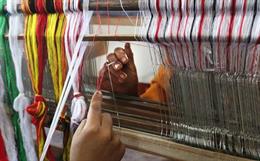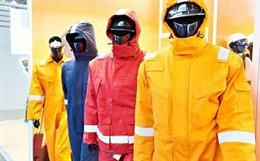In most of the professions, safetyis considered an essential part of workplace and it is even considered moreimportant than productivity in certain cases. Safety, for one, is definitelyone of the most significant issues in medical profession. The patient and thedoctor both need to be completely protected in order to keep infections at bay.The research and development department of textile sector has been rigorouslyinvolved in coming up with protective clothing for surgeons and patients toensure safety of both the parties. The clothing used during surgical proceduresmust not hinder the work of the surgeons and offer utmost protection.Disposable operating theatre clothing has long been part of surgicalprocedures, but, many hospitals are increasingly demanding better form ofreusable operating clothing these days.
Scrub suits, surgical gowns anddrapes are part of operation theatre clothing. The modern day reusable surgicaltextile is made from extremely sophisticated barrier fabrics that aim to provideoptimum level of comfort and protection in the operating theatres. The reusablesurgical textile is designed bearing in mind the factor of performance. Though,the product's performance is affected with each use but the overall functioningof this category of operating clothing outmanoeuvres the disposable clothing.The superior performance of reusable clothing provides additional safety topatients and medical professionals.
The reusable clothing is designedto tackle any kind of complex challenges that arise during the surgery. Thereusable gown, suits and drapes available in the market often exceed the userrequirements. The reusable textile goes through tensile strength testing toensure that each product is sturdy enough to survive several medical stressesduring surgical procedures. In Europe, the operating theatre reusable fabricneeds to be equal to or more that the standard EN 13795. This standard variesin different parts of the world. Nevertheless, the reusable surgical textilecurrently in use exceeds the set European standard, which makes it muchstronger than the disposable clothing.
The lofty quality yardstick andthe high-tech material used to make reusable clothing for surgeries makes itlong lasting and a much safer option in comparison to disposables. In a recentlife cycle assessment conducted for ETSA, it was indicated that among the fivedifferent types of surgical gowns, reusable textile is the most excellent interms of performance and has least impact on environment in terms of energyconsumption. Also, as per a cost benefit analysis done at the Centre forHospital Management at the University of Muenster, it was revealed that as faras production, transport cost, waste disposal and usage is considered, reusableis at least 3.6 per cent less expensive than disposables.
Among the current types ofreusable textile for surgical purposes, the surgical fabric with cent per centvirus and bacteria liquid barrier is popular. The textile has been widelyaccepted in Europe and the United States of America. This reusable textile hasa life expectancy of hundred washings. This apart, reusable operating garmentsmade from lint-free raw material are also commonly used. This reusable textileemploys micro denier polyester filaments which are combined with other highperformance textile filaments like silver and carbon. The material used in thisreusable textile is also recyclable, giving it an edge over its contemporaries.
The trend of using disposable textiles for surgical purpose is changing, but as of now the transition is still slow. In the hospitals, preference is given to ease of handling the textile alongside safety measures. Disposable textile guarantees sterility at all times without any hassle of post operative maintenance. As a result of this, the proportion of disposable operating theatre clothing is still on rise. The hospitals are gradually realising that the resulting waste from disposable surgical textile amounts to about 3.2 kg of textiles per patient per day. Also, this waste has to be disposed of correctly, which results to an annual waste of about 1200 kg for every hospital bed. This realisation is eventually seeping in; hence, reusable operating textile can expect to rule the market in coming years.
There is also extensive research going on to improve the reusable surgical textile. The current research is centred on improving the reusable surgical clothing; the emphasis is being laid on making the clothing more comfortable to wear and also durable. The German Federation of Industrial Research Associations has sponsored a project, which will continue until the beginning of 2016. This project addresses the issues of ease of wearing the reusable surgical textile, performance and lifespan. The project is working on developing textile that can be cleaned in a gentler process, as this will increase the durability of the clothing. The strength of the textile will also ensure less waste and thus will be kind of the environment.
The management teams of various organisations including the hospitals are making safety their top-priority. Reusable textile for surgical procedures can change the face of medical world for better. The reusable textile reflects the commitment to safety of the workforce and the patients and this safety goes beyond this, as this textile is cost effective and hazard-free for the environment. The commitment of hospitals towards safety of workforce and environment is growing globally, and as this commitment becomes more consistent, it will start showing in the growth rate of reusable textile.
References:
1. Textile-services.eu
2. Hospitalmanagement.net
3. Shahlon.com
4. Innovationintextiles.com







